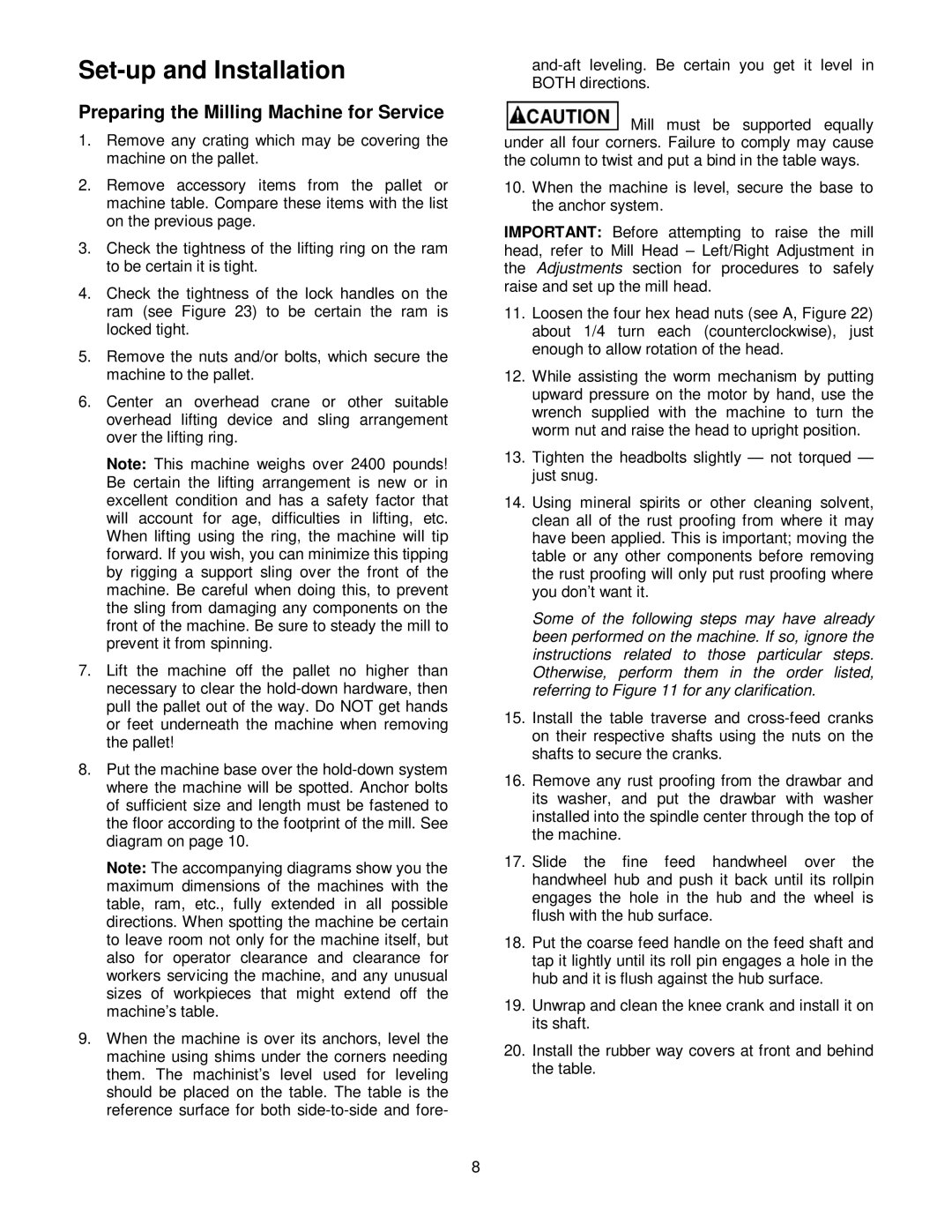JTM-4VS specifications
The Jet Tools JTM-4VS is a highly regarded vertical mill that caters to the demands of both professional machinists and serious hobbyists. This versatile piece of machinery combines precision engineering with innovative features, making it a popular choice in workshops and fabrication shops.One of the standout characteristics of the JTM-4VS is its powerful 1.5 HP motor that operates on either 115V or 230V power supply, providing flexibility depending on the workshop setup. The motor offers variable speed control, from 60 to 4200 RPM, allowing users to adjust speeds according to the material being machined. This capability makes it ideal for a wide range of applications, from heavy milling on steel to delicate work on softer materials like aluminum.
The JTM-4VS is equipped with a robust cast iron column and base, which contribute to its stability and durability. This construction minimizes vibrations during operation, resulting in improved precision and surface finish on machined parts. The table measures 9” x 49”, providing ample workspace for various projects, and is fitted with T-slots for easy clamping of workpieces.
Another notable feature of the JTM-4VS is its easy-to-use digital readout (DRO) system that assists users in making precise adjustments and measurements. The DRO enhances the overall efficiency of the milling process, allowing operators to focus on the task at hand rather than relying solely on manual measurements.
The machine also incorporates a high-grade, hardened and ground bedway that ensures smooth operation and long-lasting performance. This feature not only extends the longevity of the mill but also allows for precise vertical and horizontal movements.
Safety is a primary concern in any workshop, and Jet has addressed this with various safety features integrated into the JTM-4VS. The mill is designed with a protective shield and emergency stop button, ensuring operators can work confidently.
In summary, the Jet Tools JTM-4VS stands out for its combination of robust construction, versatile functionality, and user-friendly technologies. With its powerful motor, variable speed capabilities, and precision features, it is an excellent investment for anyone looking to enhance their machining capabilities in the workshop. Whether it's for industrial applications or intricate projects, the JTM-4VS delivers reliable performance and exceptional results.
